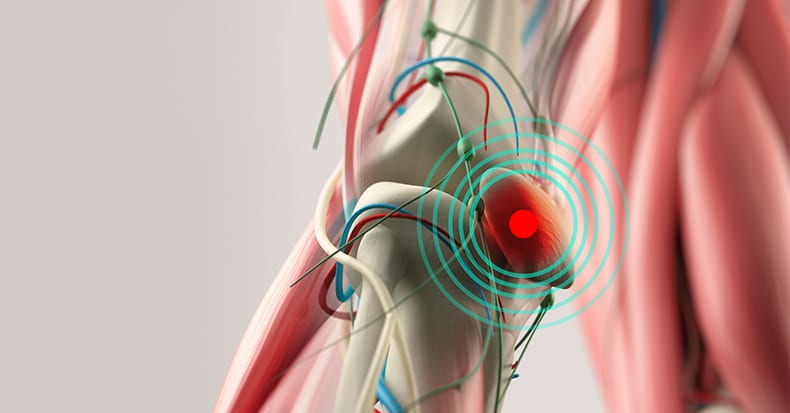It’s easy to focus on the knee when it hurts, but is the pain truly arising from the knee? There are many studies that link knee pain to problems with the lower back, hips, ankles, and feet. This month, let’s focus on the role the foot and ankle play in preserving knee health!
Because we are all bipeds—we walk on two legs—EVERYTHING from the ground up affects the rest of the body. The first “link” of this “kinetic chain” is our feet, and the last link is the head. If any of the links are altered lower down in the kinetic chain, it will affect the links that follow—usually in a negative way!
For example, a flat foot and/or pronated ankle (where the foot and ankle rolls inward) can create a “knocked knee” effect. The next time you’re in the mall or grocery store, look at people from behind and watch how many roll their ankle(s) inwards when they walk. This is especially noticeable among those wearing shorts and flip flops. It’s estimated that 80% of us are over-pronating by the age of 30, and many of us are born with congenital flat feet, so this behavior is not uncommon in kids.
There are many tissues in the knee that can generate pain. In the over-pronation scenario, the medial, or inside compartment, of the knee is overloaded by opening up excessively while the lateral, or outer compartment, over-compresses or jams together. We often find medial and/or lateral compartment pain in the over-pronated ankle/knocked-knee side.
The front of the knee houses the knee cap that glides in a groove, and the knocked-knee results in overloading on the outside of the knee cap/groove creating a condition called lateral patellofemoral pressure syndrome and/or chondromalacia patella.
When you present for a chiropractic evaluation, your doctor will pay great attention to your gait or walking rhythm and look for over-pronation vs. supination (an outward shift of the ankle), the degree the knee “knocks” inwards (genu valgum) vs. outwards (genu varum or “bow-legged”), respectively. You can correct the pronation effect and unload the compartment that is literally getting “beat up” (hopefully BEFORE arthritis occurs) by placing a medial (or lateral) heel wedge into a foot orthotic.
The next topic is exercise! It is SO important to keep the muscles around the knee stretched and strong! There is ONE particular muscle (vastus medialis oblique or VMO) that connects our upper/inner knee cap to the medial/inside leg. It is the ONLY muscle that counteracts the outward pull by the other quadriceps muscles that attach to the kneecap. Your doctor of chiropractic can show you how to specifically exercise and isolate the VMO, if necessary.
Thousands of Doctors of Chiropractic across the United States and Canada have taken "The ChiroTrust Pledge":
“To the best of my ability, I agree to
provide my patients convenient, affordable,
and mainstream Chiropractic care.
I will not use unnecessary long-term
treatment plans and/or therapies.”
To locate a Doctor of Chiropractic who has taken The ChiroTrust Pledge, google "The ChiroTrust Pledge" and the name of a town in quotes.
(example: "ChiroTrust Pledge" "Olympia, WA")
Content Courtesy of Chiro-Trust.org. All Rights Reserved.

